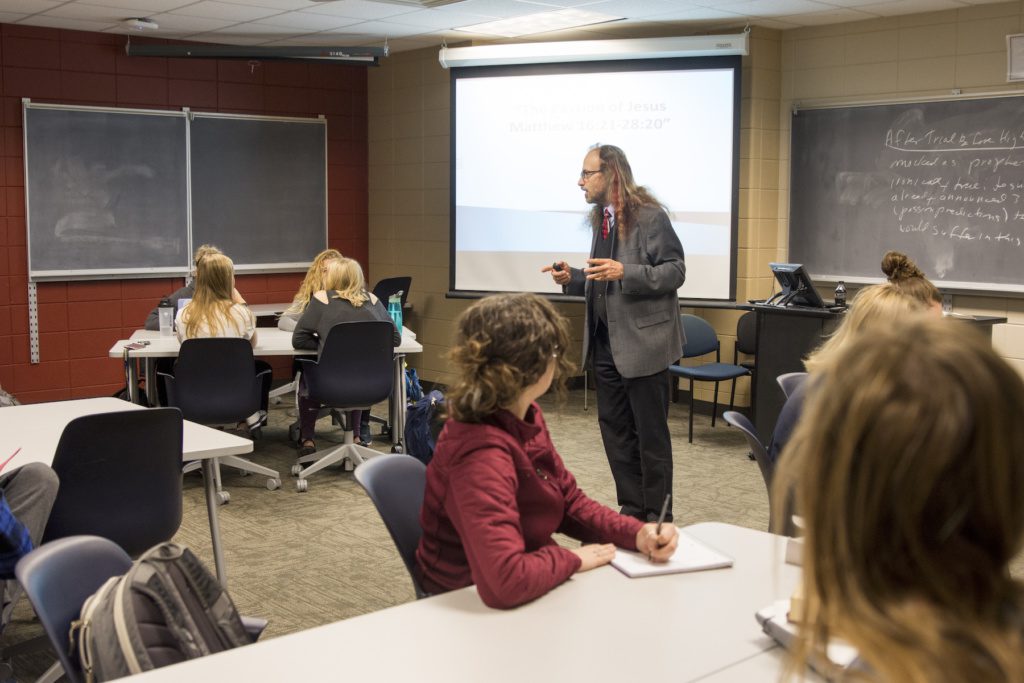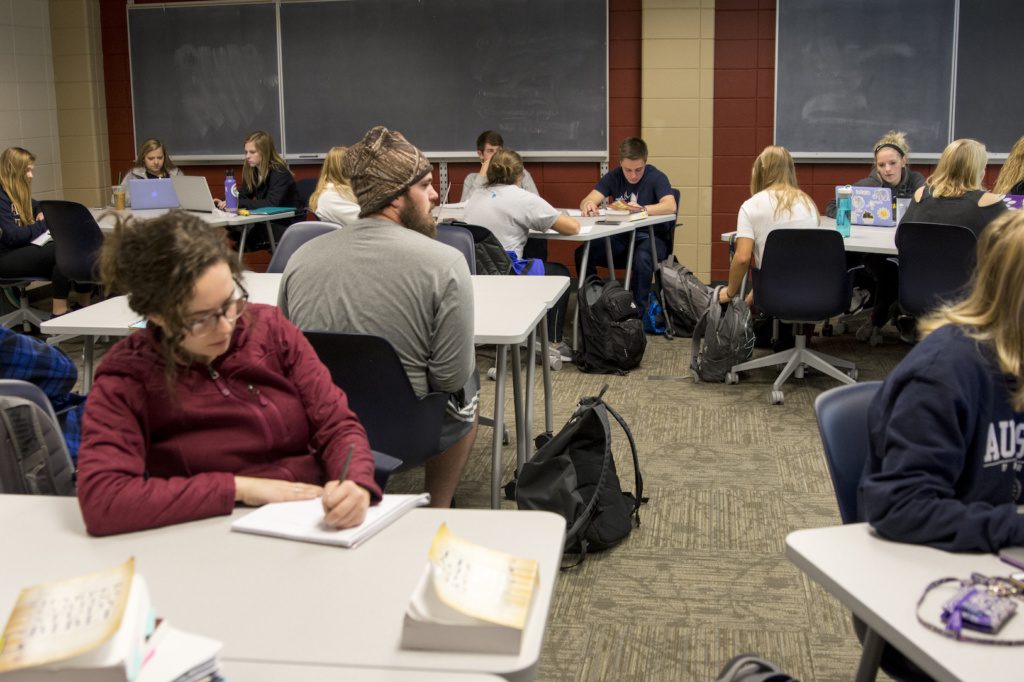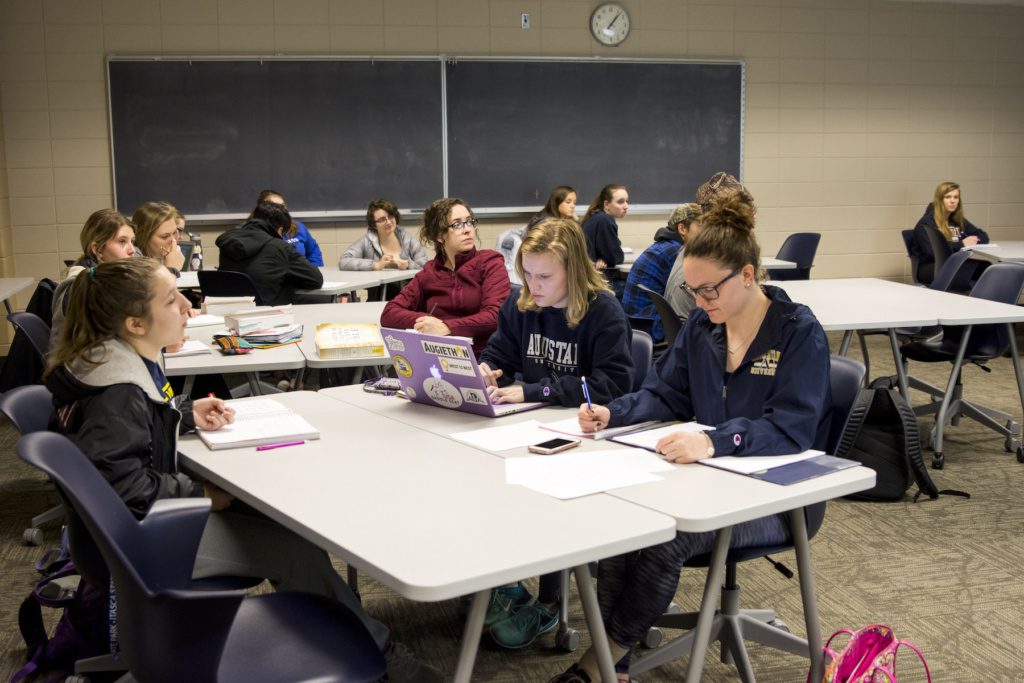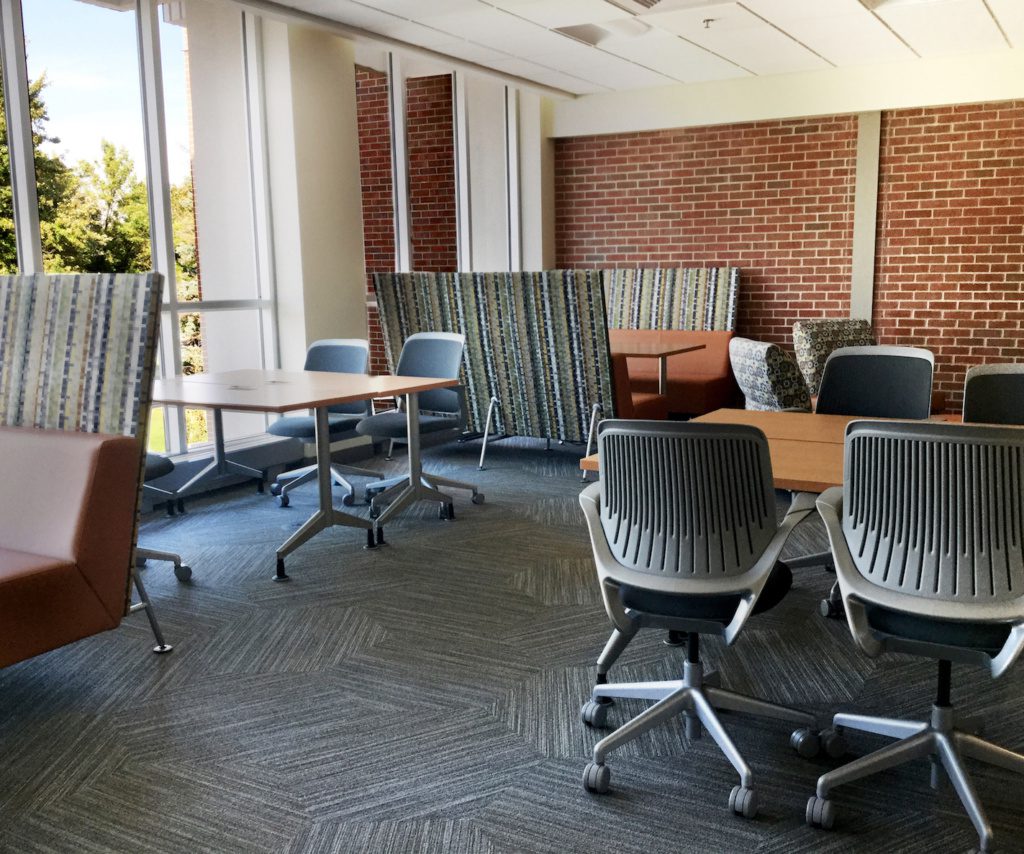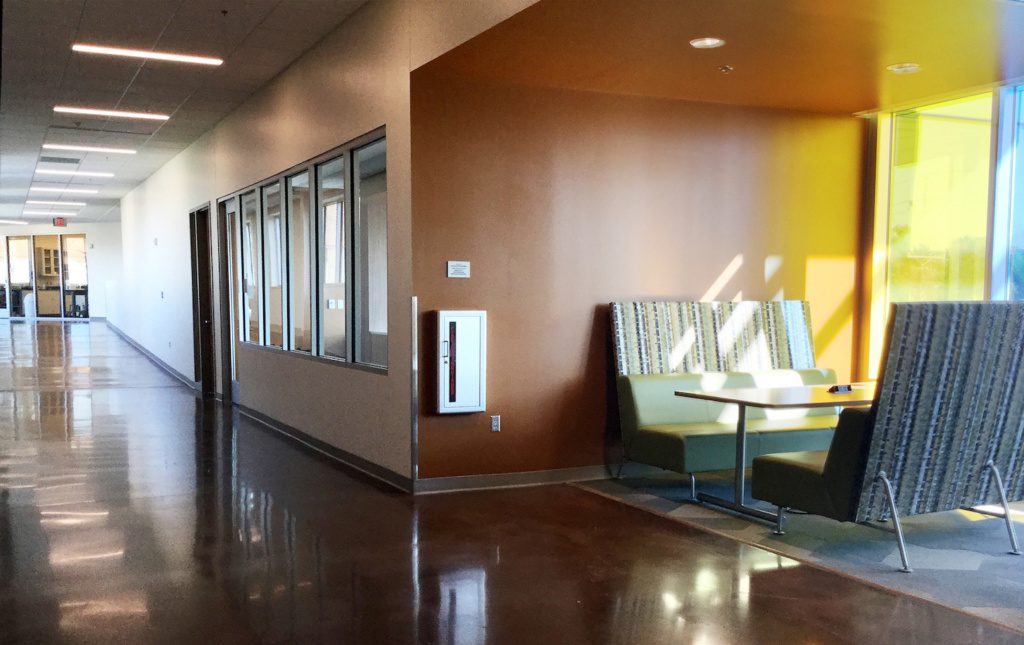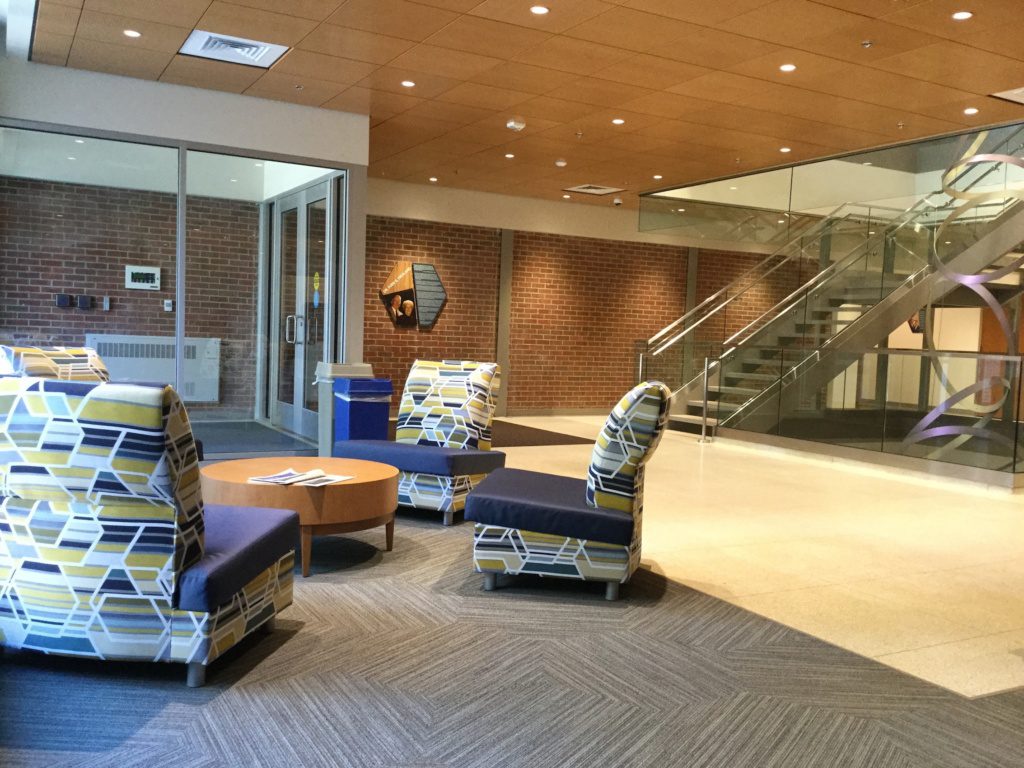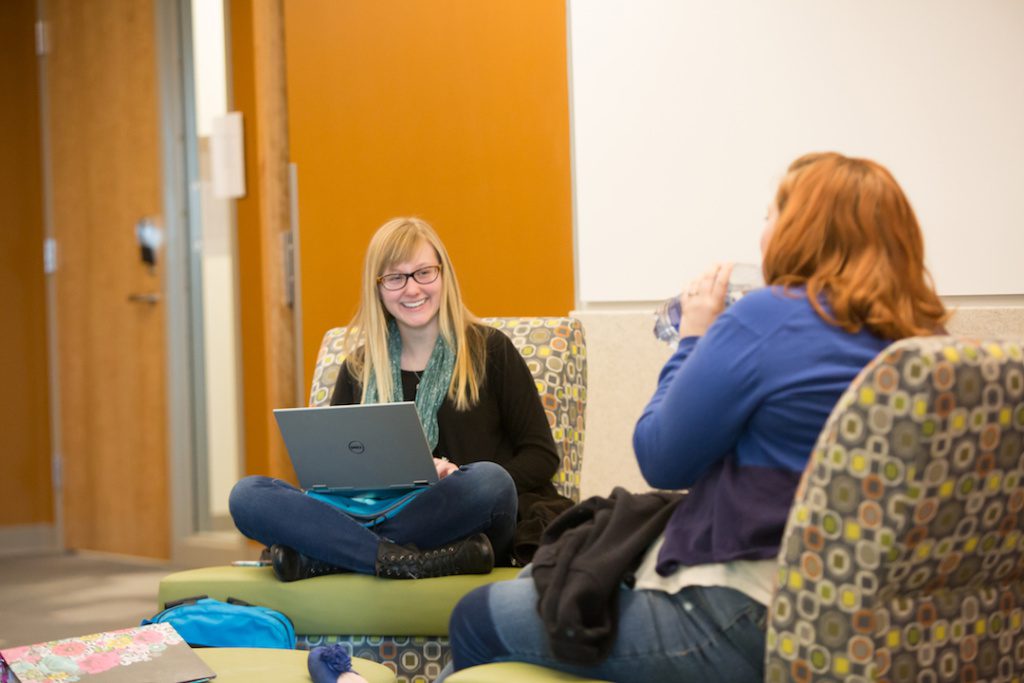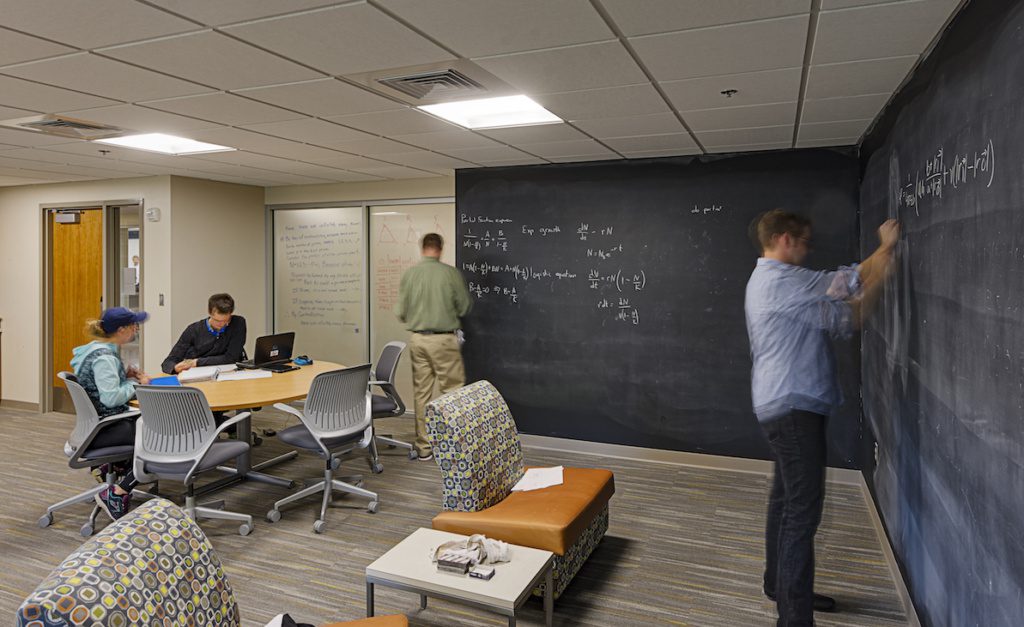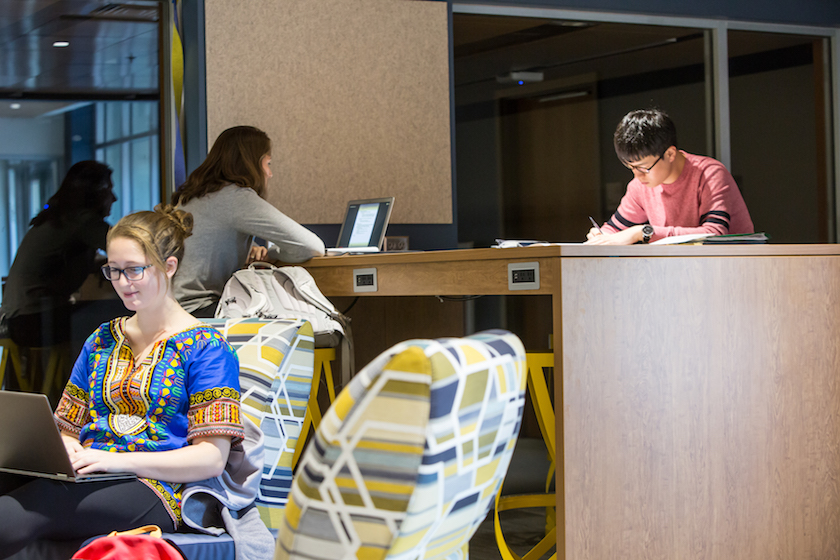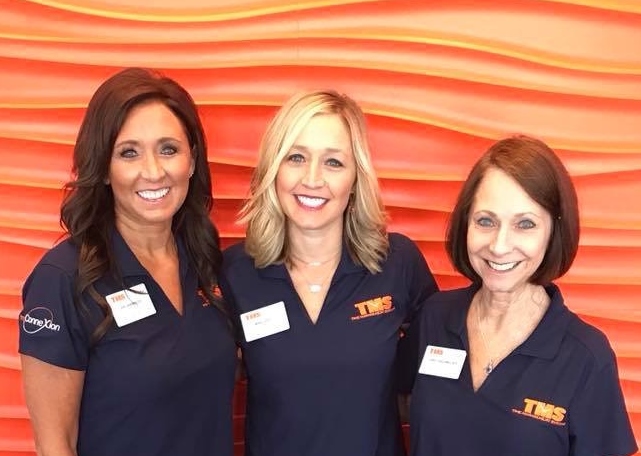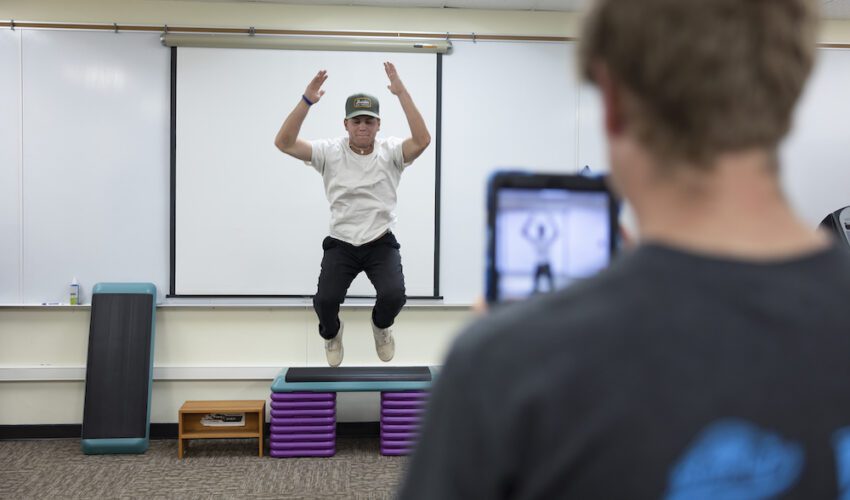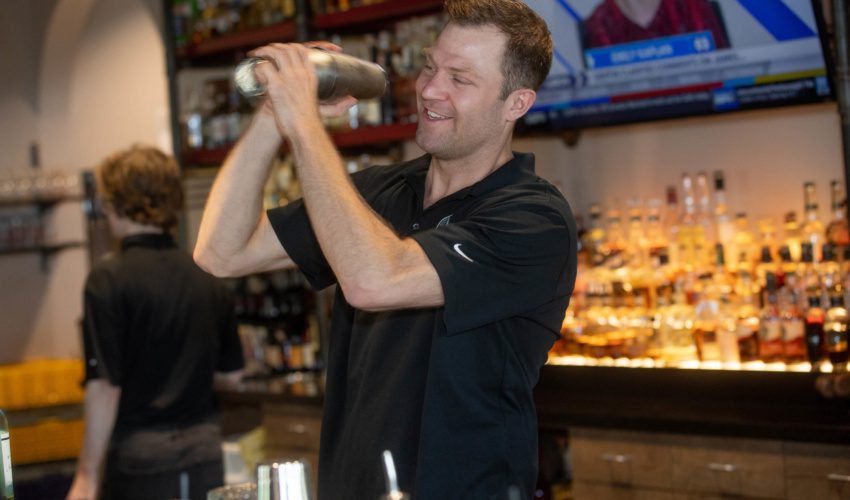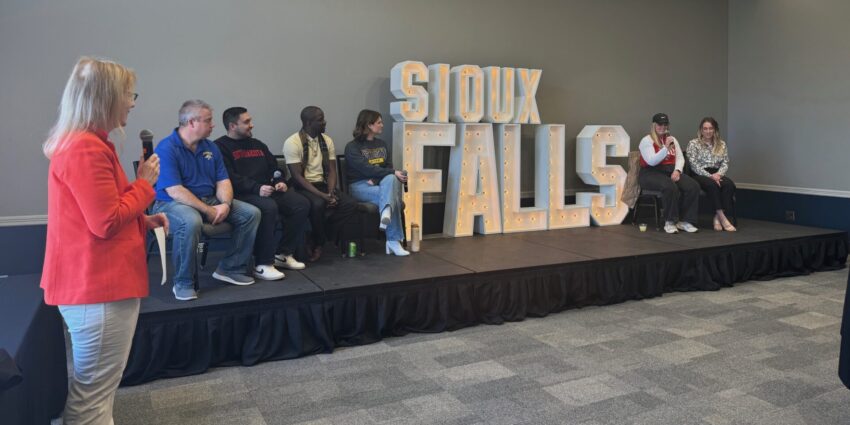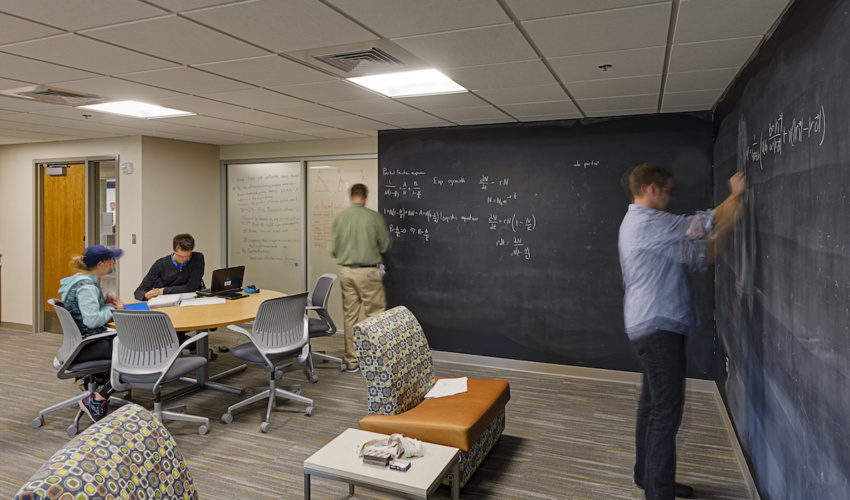Learning for the future bolstered by innovation in design, furnishings
This piece is presented by Interstate Office Products.
You probably can picture the college desks of yesterday. Perhaps you sat in one yourself.
Think colored-plastic bucket chair with attached tablet desk. Forget moving in it – assuming you could even fit comfortably in it.
“They go back about 40 years,” said Reed Scott, a workplace specialist at Interstate Office Products.
“They served their purpose, but the problem is even an average-size person finds them very confining to sit in. They’re only one height. If you’re tall, you’re not comfortable. And if you’re short, your legs dangle.”
Augustana addressed the dated surroundings in a handful of classrooms at its Humanities Building, and the effect was immediate.
“It’s a necessary part of the ongoing process of addressing education for the 21st century and making sure that this campus is attractive and as usable as it possibly can be,” said Dr. Jeffrey Miller, chair of the humanities division. The changes have been good for the morale of faculty and students. “When people come here to visit, they want to see modern facilities everywhere. When students and faculty came back in the fall and saw the new spaces, the reaction was really positive with both groups.”
Interstate Office Products helped swap out the dated furnishings with Steelcase products — specifically, the Node collaborative chair that “is easily adjustable, fits the majority of the population and has a bit of an arm profile on it,” Scott explained.
“We also dressed them up with a platinum metallic frame to give a more techy look and incorporated a dark blue shell representative of the Augie blue branding color,” Scott said.
For desks, the humanities classrooms now include two-person mobile tables that can be arranged in a variety of configurations for lectures and group work.
“The tables provide more room,” Miller said. “The atmosphere is so different, so much more conversational and collaborative than the previous setting.”
The project is an example of a shift in classroom design and furnishing that emphasizes active-learning environments – a holistic approach combining educational needs with technology and use of physical space.
“Students need a range of teaching and learning approaches to succeed, and educators are thinking beyond static rows of chairs to serve the needs of all learners,” said Kristi Christensen, vice president of sales and design at IOP.
“Today’s demands on learning outcomes are very different from the demands of 25, 10 or even five years ago. We are in an era where people need to have a way of thinking that is different than what schools have traditionally taught. Nonthinking and repetitive jobs are dropping away. People are being hired for critical thinking, communication, collaboration and creativity.”
Using design principles that create intentional spaces for different approaches to learning, Interstate Office Products is helping education clients seamlessly transition between lecture modes, large-group discussions and small collaboration teams.
“This creates spaces that engage and inspire users, place control of learning and teaching in their hands, and provide tangible, successful results,” Christensen said. “Space as an agent for change indicates we must provide spaces and teach people to use them for collaborative learning and critical thinking.”
Froiland Science Complex design
All these active-learning principles were applied when Augustana constructed the Froiland Science Complex.
Architect TSP led the process. The firm designed the original Gilbert Science Center in the 1960s and used this opportunity to create an education space for the 21st century.
Interior designer Karen Mutschelknaus of TSP and Augustana representatives visited the Interstate Office Products showroom to learn more about the latest research as it pertained to their project as well as to view the variety of furniture solutions.
“The style and look of the pieces really fit the project,” Mutschelknaus said, adding that the Steelcase products allowed for customized patterns without giving up any durability. “It’s upholstery that’s stain-resistant and has a thin, rubber underlayer, so anything spilled will just bead up and not soak into the furniture itself.”
Here’s a look at some of the IOP pieces Augustana chose for Froiland:
The chairs
“Most students don’t sit completely upright in a chair when they read or study,” Mutschelknaus explained. “This furniture is comfortable and also has built-in power capabilities. You can plug your laptop or other devices right into these pieces.”
The booths
“We added the booths and a lot of neat little nooks and areas for students,” Mutschelknaus said. “The Gilbert Science Center didn’t have any study alcoves.”
The lounges
Interstate Office Products provided a mix of seating for breakout spaces and study lounges. These spaces are full of students anytime the building is open.
“Students will show up to get their favorite spot on their ‘science day’ because, with lectures and labs, they might be in the building for hours,” Mutschelknaus said. “There’s so much natural light, and it’s a place students want to be.”
The results
Most importantly, those using the building are seeing strong results from the design and furniture used.
Physics professor Eric Wells noticed an immediate difference.
“So far, the active-learning classrooms have been a hit,” he said, adding the physics professors have modified teaching methods to incorporate more group activities and collaborative work. Several biology professors have done the same.
“While it is too early to draw strong conclusions, the anecdotal evidence is almost uniformly positive,” he said. “In a more numerical measure, in physics we have seen strong gains between pre-instruction and post-instruction measures of the students’ conceptual understanding.”
Alumni also have been “thrilled in the same way the students were when the building first opened,” he said.
“The building is very active in the evening and throughout the day with a steady population of students studying here even when they don’t have a class in session,” Wells added, crediting the break areas created.
“While the furniture is inviting and comfortable, it is also – so far – tough enough to stand up to student wear and tear.”
It’s common for educators to see relatively small interior changes create such significant impact, Christensen said.
“The best scenario is to find an impassioned professor who wants to embrace new or different ways of teaching and combine that with a flexible environment,” she said. “We can help with that flexible environment, whether it be mobile tables and chairs, technology to support electronic collaboration, analog whiteboards to sketch thoughts or mobile seating with storage and surfaces all in one. The more flexible the environment, the more ability there is to shift teaching styles as needed during the class.”
And it’s not just an approach for schools, she added.
“The same thinking should be applied to corporate training environments as well. No matter the setting, active learning has proven to be successful!”
To learn more about the products available, contact IOP at 605-339-0300 or i-o-p.com.

